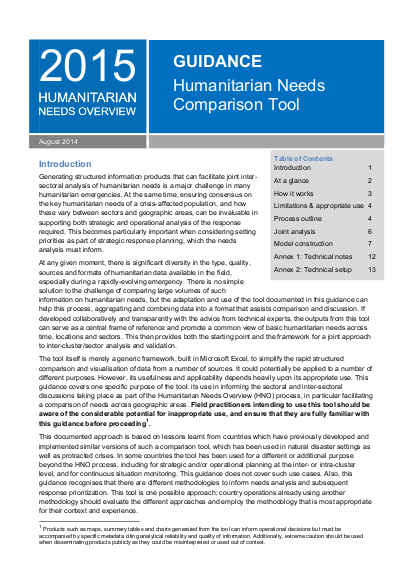
At any given moment, there is significant diversity in the type, quality, sources and formats of humanitarian data available in the field, especially during a rapidly-evolving emergency. There is no simple solution to the challenge of comparing large volumes of such information on humanitarian needs, but the adaptation and use of the tool documented in this guidance can help this process, aggregating and combining data into a format that assists comparison and discussion. If developed collaboratively and transparently with the advice from technical experts, the outputs from this tool can serve as a central frame of reference and promote a common view of basic humanitarian needs across time, locations and sectors. This then provides both the starting point and the framework for a joint approach to inter-cluster/sector analysis and validation.
The tool itself is merely a generic framework, built in Microsoft Excel, to simplify the rapid structured comparison and visualisation of data from a number of sources. It could potentially be applied to a number of different purposes. However, its usefulness and applicability depends heavily upon its appropriate use. This guidance covers one specific purpose of the tool: its use in informing the sectoral and inter-sectoral discussions taking place as part of the Humanitarian Needs Overview (HNO) process, in particular facilitating a comparison of needs across geographic areas.